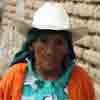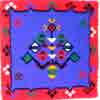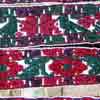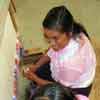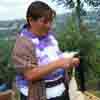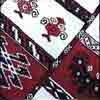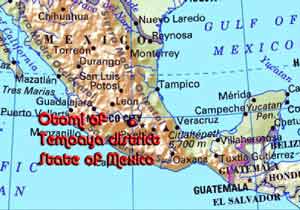 |
 |
 |
 |
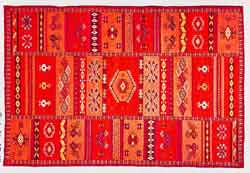
The Otomi traditional costume consists of a wool wrap skirt a back loom woven belt , embroidered blouse / slip, a transparent over blouse, reboso, woven strand for the braids and a white cowboy hat. In all of the villages the costume is very similar however I have reported them because of the rich cultural heritage and the resistance to mestizo culture that has endured in the region.
This district and Acumby are the two most heavily populated Otomi districts in the State of Mexico. There are actually many smaller towns in the Temoaya district which will gradually get documented. Over all the people were somewhat suspicious at first but I had no trouble gaining the confidence of the people pictured in the gallery
There are a number of possible meaning of the word Otomi , the most probable is " hunters that walk carrying arrows" The Otomi in there language call themselves "hña hñu" that mean the people that speak Otomi.
Base on their language the Otomi live in 14 of the 121 in the State of Mexico districts in order of important they are: Toluca, Temoaya, Jiquipilco, Morelos, Otzolotepec, Chapa de Mota, Lerma, Aculco, Amanalco, Huixquilucan, Xonacatlán, Timilpan y Zinacantepec The majority of these region are located in the north-east and the central regions of the state.
There are a number of dialects of Otomi depending on where the town is located. The Otomi language is consider tonal which makes the written form complicated. The Otopame family includes various languages. Chichimeca Jonaz is spoken in the state of Guanajuato. Mazahua is spoken in Michoacan. Otomi includes six languages that are spoken in the states of Puebla, Veracruz, Queretaro, Hidalgo, and Tlaxcala. Pame is spoken in the state of San Luis Potosi, while Matlatzinca and Ocuilteco are spoken in the state of Mexico.
|
Home - The Collection - Favorite Photos- Bob's Top 10 - Textile Patterns - The Villages - Participate
For more information or comments please contact me at: info@mexicantextiles.com © 2005 Bob Freund All Rights Reserved |

